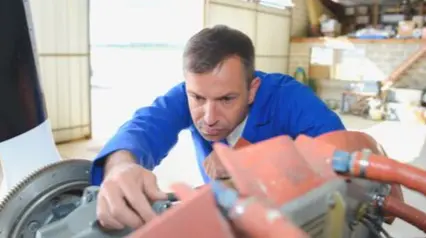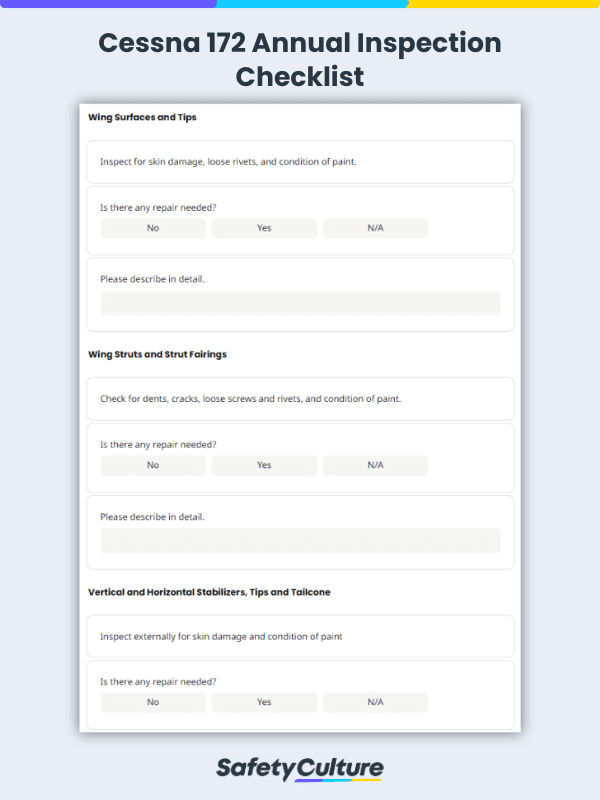What is an Aircraft Maintenance Check?
Aircraft maintenance checks are periodic inspections performed by technicians on every commercial or civil aircraft after a defined period of time or usage. As part These procedures help determine the airworthiness of an aircraft and ensure the safety of its next flight and the crew and passengers it is carrying.
The Essence of Aircraft Maintenance Checks
As an inherent responsibility part of aircraft ownership required by the Federal Aviation Administration (FAA), no aircraft operator/owner is exempted from aircraft maintenance checks. Title 14 of the Code of Federal Regulations (14 CFR) specifically states that “the owner/operator of a civil aircraft is primarily responsible for maintaining that aircraft in an airworthy condition, including compliance with FAA Airworthiness Directives (AD)”. Aircraft maintenance checks involve a series of activities, such as inspection, overhaul, reformation, defect rectification, and repair that helps ensure air transportation is as safe as possible. In a nutshell, here are 4 key reasons why aircraft maintenance checks are essential to aircraft operators:
- To prevent mechanical failures and ensure flight safety
In aviation history, mechanical failures account for almost a quarter of all fatal accident causes; the rest are due to sabotage, weather, and human error. Aircraft maintenance checks help identify hazards early on, and ensure that only the safest aircraft are utilized to guarantee the safety of the passengers and flight crew. - To preserve the life of the aircraft and maintain a record of safe performance
Aircraft are designed to operate for certain cycle limits, a determinant of the airframe’s lifespan. Through regular aircraft maintenance checks, aircraft owners can keep engines working at their best level and ensure that their safety design is sustained throughout their lifespan. - To minimize aircraft downtime
Every second is valuable in aircraft operations. By regularly maintaining engines, aircraft can suffer from less downtime and major repairs, which can benefit operators on their bottom line. - To keep repair costs at bay
Repairs are often more expensive than maintenance activities, so keeping up with a regular aircraft maintenance check schedule is beneficial as it saves operators from costly repairs.
2 Major Types of Aircraft Maintenance Checks
According to 14 CFR, aircraft maintenance checks revolve around two broad types of inspections: scheduled and unscheduled. Here are the differences between the two types of aircraft maintenance checks and the types of inspections under them:
1. Scheduled Aircraft Maintenance Checks
Scheduled aircraft maintenance checks comprise preventative maintenance activities performed according to defined intervals, as required by the Federal Aviation Regulations (FAR). Operators often develop and customize checklists (or job cards) to record deficiencies discovered during inspections. Four types of aircraft inspections are covered under this type of check, namely:
- 100 Hour Inspection
Aircraft under 12,500 pounds (except turbojet/turbo propeller-powered multi-engine airplanes and turbine-powered rotorcraft) utilized for commercial operations must have undergone a 100-hour inspection within the preceding 100 hours of time in service (FAR 91.409b). During the 100-hour inspection, plates, access doors, cowlings, and fairings are disassembled, and all major aircraft components are inspected, including the engine, cabin, avionics, batteries, and flight control system. Aircraft used for flight instructions for hire (e.g. Cessna 172 and 150), when supplied by a flight instructor, is also subject to 100-hour inspection. This inspection must also be completed by an A&P mechanic. - Annual Inspection
As per the FAA, every airplane is required to undergo an annual inspection to be legal to operate, regardless of whether they are used for hire, flight instruction, or for recreational use (FAR 91.409a). For the inspection to be valid, it must be accomplished according to FAR 43 Appendix D by a qualified Airframe and/or Power Plant (A&P) mechanic holding an inspection authorization (IA) within the preceding 12 calendar months.Example: If the aircraft’s annual inspection is endorsed on October 15, 2019, the next annual is due before November 1, 2020; if not, the aircraft may not be flown without authorization.What’s the difference between 100 hour and annual inspections?
The coverage of the annual and 100-hour inspections are identical, however, the 100-hour inspection can be performed by a mechanic without an IA, while an annual inspection requires a mechanic which holds an IA. Further, the annual can substitute for a 100-hour inspection, but not vice versa. - Progressive Inspection
If an operator’s aircraft fleet is utilized heavily every year (e.g. flight school, corporate, and FBO fleets), they may opt for a progressive inspection plan to minimize maintenance downtime with the same end results. The progressive inspection is a complete inspection of the aircraft, conducted in stages, with all stages to be completed in 12 calendar months. Unlike a 100-hour or annual inspection, this plan enables more frequent but shorter inspection programs, as long as they are approved by the FAA. Although, progressive inspection plans must begin with either an annual or 100-hour inspection; inspections after the initial inspection should then follow the schedule according to the approved progressive inspection program. - Preflight Checks
Preflight checks are conducted by pilots or student pilots prior to flights to verify if an aircraft is safe for departure. With the help of a checklist, they conduct a walk-around to inspect major components of the aircraft and note if there are any defects that need immediate repair.
2. Unscheduled Aircraft Maintenance Checks
Some aircraft maintenance checks can be sudden and unforeseen, especially when there are problems found during the pre-flight, progressive, annual, or 100-hour inspection. Unscheduled aircraft maintenance checks can be corrective and preventive in nature, as they trigger the necessary immediate repairs while also helping to implement solutions in anticipation of potential faults.
Borescope Inspection
A borescope inspection is a type of inspection that uses a borescope tool to visually inspect areas of the aircraft and engine that are not easily accessible. Performing borescope inspections allow maintenance workers to check the overall condition of the engine or turbine which helps prevent accidents caused by engine failure and avoid costly maintenance repairs.
Things to Look out for During a Borescope Inspection
In any industry, inspections play a big role when it comes to maintenance. Borescope inspections allow aircraft maintenance workers to thoroughly inspect aircraft engines and identify issues before they get out of hand. Below are six major things aircraft maintenance workers should look out for when conducting a borescope inspection:
- Worn-out components
Engines may be long-lived, but they’re still prone to wear. Components need to be replaced from time to time to ensure that they work according to their intended use. - Poor lubrication
Components of the aircraft engine need proper lubrication to function properly. Keep in mind the appropriate volume, and the right type of lubricant for each component. Observing proper lubrication maintenance routine protects your equipment from engine oil burning and other damages. - Contaminated fluids
Aircraft engines are built to keep dirt and debris out of the fluids. Should the engine oil, become contaminated the source of contamination should be tracked down and then corrected. Examples of engine oil contaminants are abrasives (dust and dirt), water, coolant, and unburned diesel fuel. When contamination occurs, the fluids need to be flushed and replaced to prevent further damage. - Leaks
During the inspection, keep an eye out for implications of leaks. Leaks not only let out fluids your airplane engine needs to operate, but it can also let in contaminants that can sabotage the performance of your airplane engine fluids. - Cracks
A cracked engine component indicates a severe engine problem. When cracks are found within the components of the engine, that part becomes brittle which then escalates to larger issues such as loss of fluids and overheating. - Corrosion
Internal engine components should not rust and corrode over time, which means that in the event that you find corrosion, this indicated that there is an area within the engine that shouldn’t be getting water and air in the first place.
Borescope Inspection Best Practices
Borescope devices for inspections have become essential tools of the trade in the aviation industry. Periodic inspection and regular maintenance are required to not only prolong the life of the engine but also ensure its safety for use. Make your borescope inspections more effective with the following good practices:
- Be familiar with your equipment.
It is always important to know your equipment before using it. Without proper knowledge of the equipment, you risk yourself human error that you may not even know how to correct. Familiarize yourself with how to operate the borescope tool. Take advantage of training and learn about its limitations. - Have a clear understanding of equipment standards.
Another important thing to consider during borescope inspections is being knowledgeable about the items you are inspecting. Inspectors should have a clear understanding of what a good and part looks like and be aware of defects to look out for. - Prepare a good inspection report.
The quality of an inspection report represents the quality of the inspection work, which is why borescope inspection reports should be properly documented, accurate and comprehensive. A good borescope inspection report should contain basic information such as damage description. It should describe the general appearance of the defect and determine defect categories such as ablation, nick, dent, etc. Features of the defect such as measurements and dimensions should also be provided, to clearly understand the overall situation and provide an accurate judgment.



